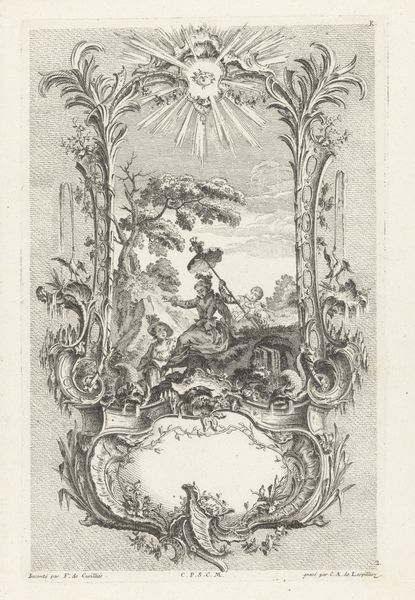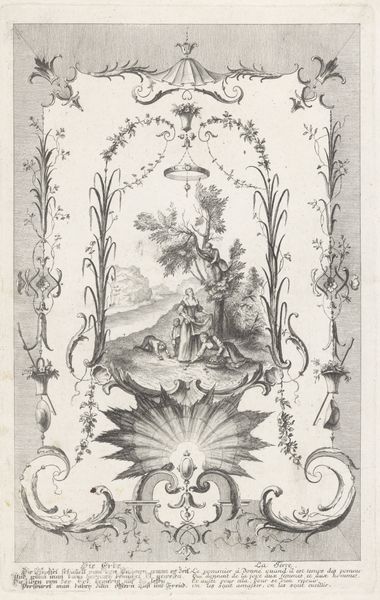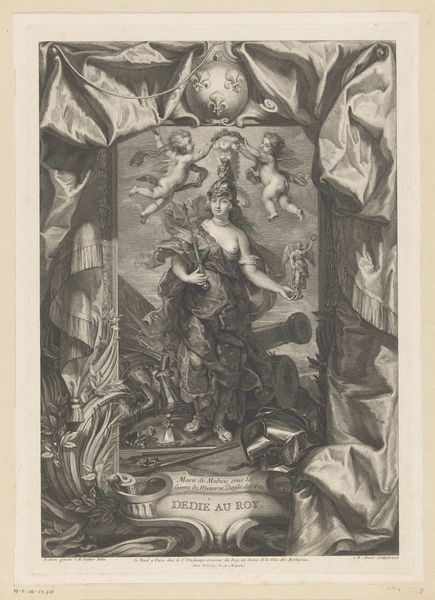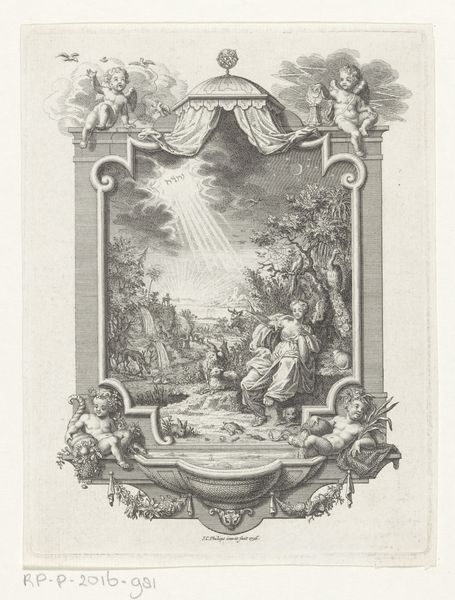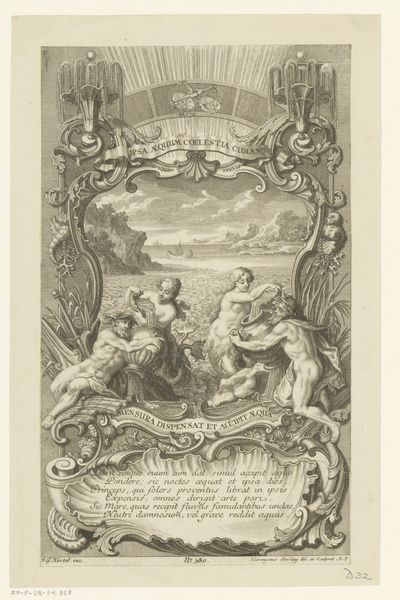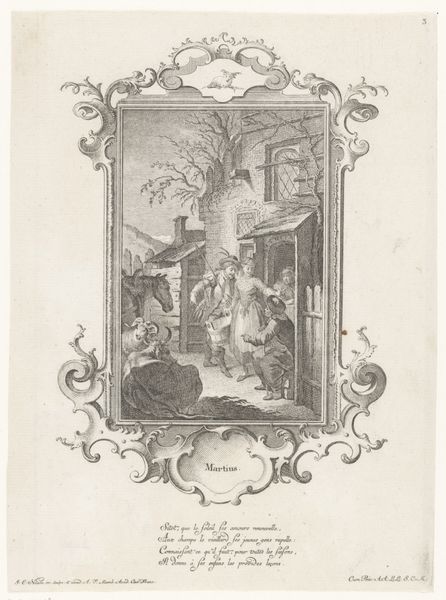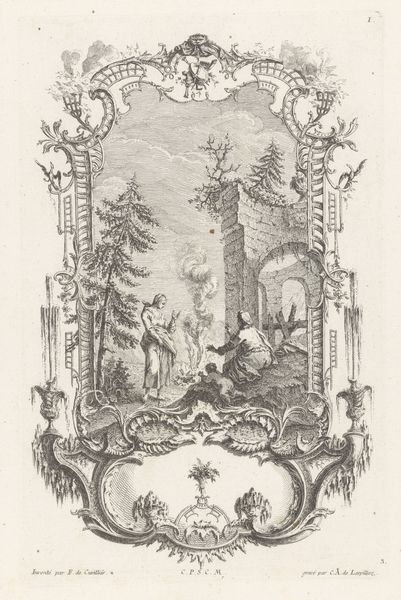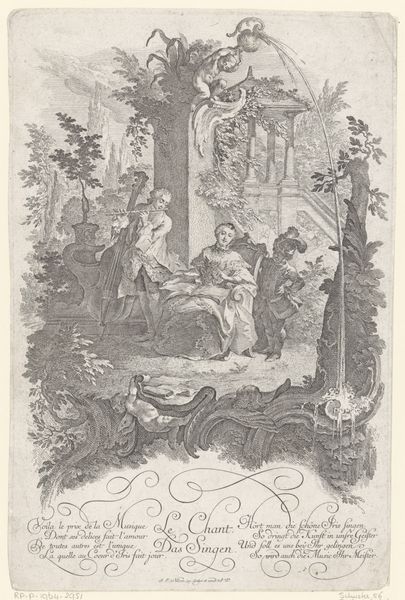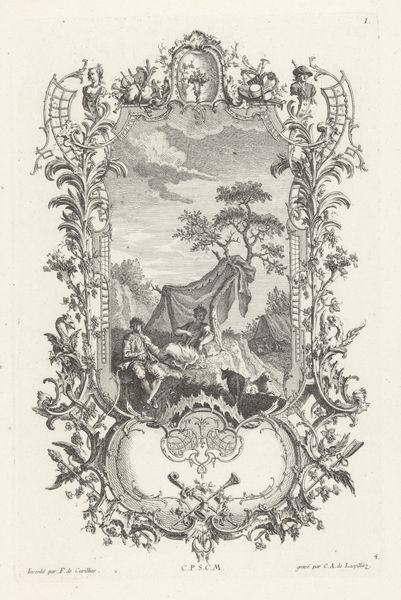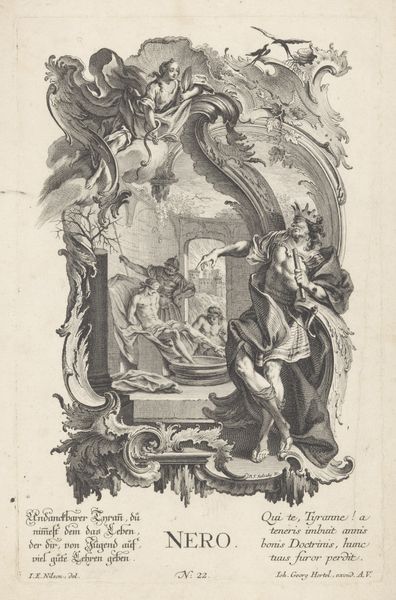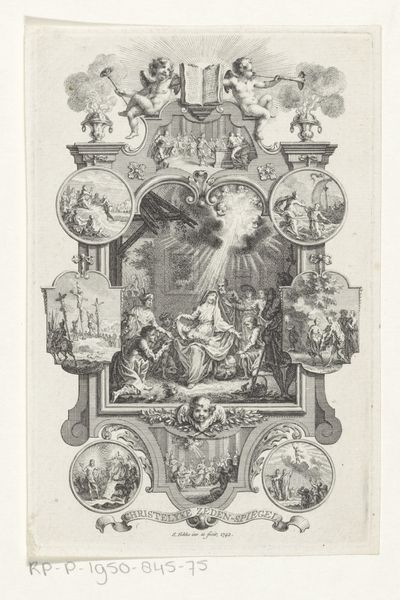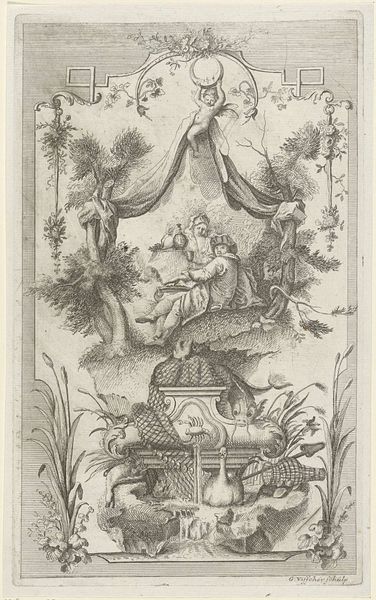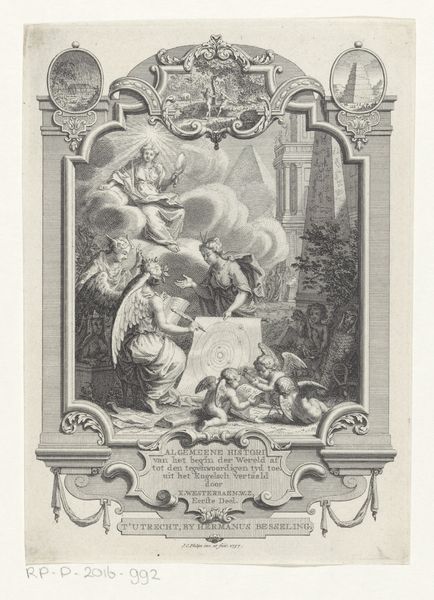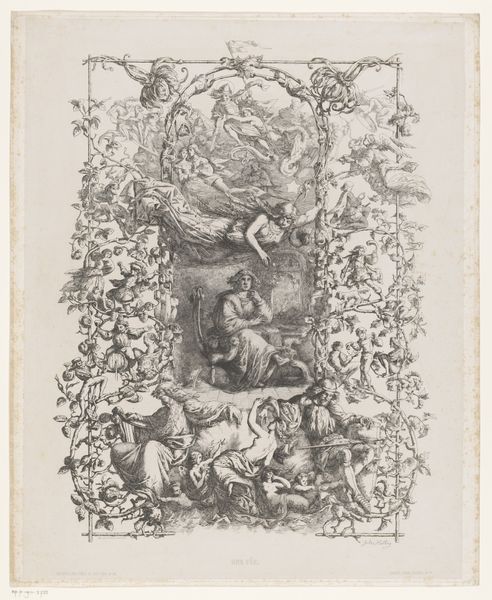
print, engraving
#
narrative-art
#
baroque
# print
#
figuration
#
history-painting
#
engraving
Dimensions: height 163 mm, width 124 mm
Copyright: Rijks Museum: Open Domain
Editor: We’re looking at “Cartouche met de opstanding van Christus,” or “Cartouche with the Resurrection of Christ” by Jan Caspar Philips, made in 1736. It's an engraving. The composition, framed in this elaborate cartouche, is very theatrical! What do you see as the most striking element in this piece? Curator: The striking feature lies precisely in that cartouche, and how its form interacts with the internal image. Note how the artist has deliberately disrupted the boundary between frame and image. Figures spill beyond the cartouche's defined edges. The work achieves a visual dynamism that reinforces the theme of resurrection. Editor: That's fascinating. I hadn't considered the breakdown of boundaries that way. So, the formal structure supports the subject matter? Curator: Precisely. Observe how the composition is balanced. The radiant Christ figure at the center provides a focal point, with the secondary figures carefully arranged to guide the eye around the space. Also the use of light and shadow, achieved through engraving, adds depth and drama. Editor: And the putti and figures incorporated into the cartouche; what role do they play compositionally? Curator: The putti at the top act as framing devices, while the draped female figures to the sides add verticality, leading the eye up and down the image, and again, enhancing that sense of theatricality. Editor: This has given me a new perspective on Baroque prints and how they can convey movement within such a rigid structure. Curator: Indeed. By focusing on its internal formal relations, the work reveals its underlying principles. Form, light and balance are key to a richer understanding.
Comments
No comments
Be the first to comment and join the conversation on the ultimate creative platform.
